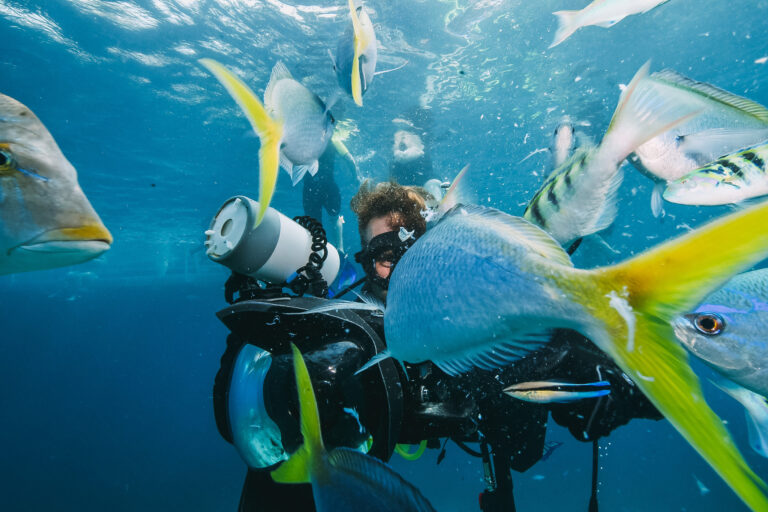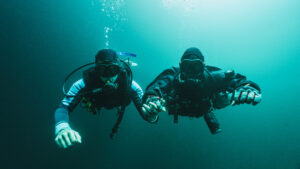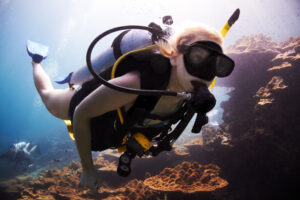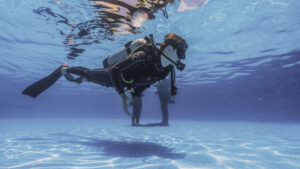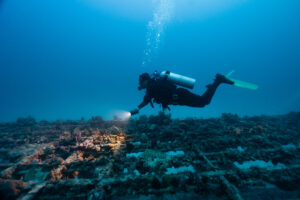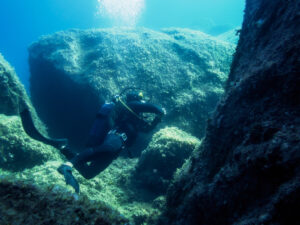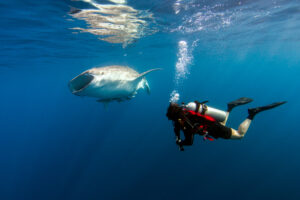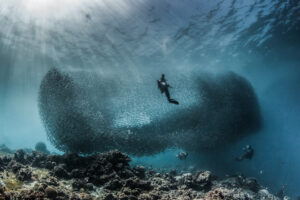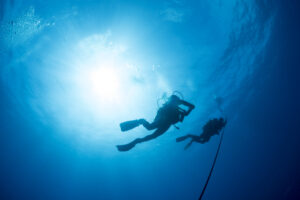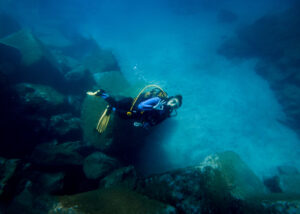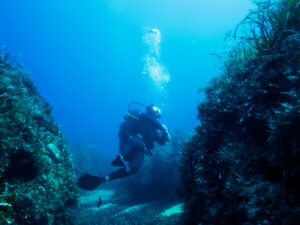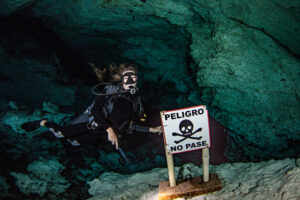What is a A-Clamp Valve?
The A-Clamp Valve, sometimes also referred to as the yoke valve, is an integral part of scuba diving equipment that provides a secure connection between a diving cylinder and a regulator or filling whip. The A-Clamp Valve is built to adhere to the CGA 850 “international” connection standard, ensuring compatibility with a wide range of diving cylinders and regulators across the globe.
The A-Clamp Valve, as the name suggests, features an A-shaped clamp which fastens around the cylinder valve, securing the regulator or filling whip to the diving cylinder. The robust design and secure connection of the A-Clamp Valve make it a favored choice among both recreational and professional divers, contributing significantly to the safety and efficiency of underwater excursions.
Understanding the CGA 850 International Connection
The CGA 850 international connection is a universally recognized standard in the world of scuba diving. Defined by the Compressed Gas Association, the CGA 850 standard specifies the design, size, and threading details of the cylinder valve outlet and corresponding regulator or filling whip connection.
Adherence to the CGA 850 standard ensures that a diving cylinder equipped with an A-Clamp Valve can connect seamlessly with regulators and filling whips of various makes and models. This standardization is crucial for the safety and convenience of divers, as it eliminates the risk of incompatible or loose connections that could potentially lead to equipment failure or gas leakage underwater.
The Role and Function of the A-Clamp Valve
Connecting the Diving Cylinder and Regulator
The primary function of the A-Clamp Valve is to provide a secure and efficient connection between the diving cylinder and the regulator. The regulator, an essential component of the diving equipment, allows the diver to breathe the compressed air in the diving cylinder at a comfortable and safe pressure.
The A-Clamp Valve works by clamping onto the valve outlet of the diving cylinder. The A-Clamp Valve’s design ensures a tight and secure connection, minimizing the risk of gas leakage. Once the A-Clamp Valve is secured, the regulator or filling whip can be attached, enabling the compressed gas to flow from the cylinder to the diver through the regulator.
Ensuring Safe and Efficient Gas Flow
Another crucial function of the A-Clamp Valve is to ensure the safe and efficient flow of gas from the diving cylinder to the regulator. The A-Clamp Valve features a pressure seal, typically made of rubber, that creates a tight seal when the regulator or filling whip is attached. This pressure seal prevents the escape of gas, ensuring that the diver has a consistent and ample supply of air underwater.
Furthermore, the A-Clamp Valve also includes a screw mechanism that allows divers to control the flow of gas from the diving cylinder. This control is crucial in situations where the gas flow needs to be adjusted or stopped entirely, such as during equipment checks or in emergency situations.
Components of the A-Clamp Valve
The Clamp
The clamp is the most recognizable component of the A-Clamp Valve. As the name suggests, this component is shaped like the letter ‘A’ and is designed to fit around the valve outlet of the diving cylinder. The clamp is typically made of a sturdy and corrosion-resistant material like stainless steel or brass to withstand the harsh underwater conditions and to ensure longevity.
The clamp features a screw mechanism that enables it to secure tightly onto the valve outlet. This mechanism allows for easy attachment and detachment of the A-Clamp Valve, providing convenience to divers while ensuring a secure
connection to the diving cylinder.
The Body
The body of the A-Clamp Valve is the part that connects the clamp to the regulator or filling whip. It is usually cylindrical and features a threaded hole for the regulator or filling whip to screw into. This component is also typically made of robust and corrosion-resistant materials, such as stainless steel or brass, ensuring durability and longevity in demanding underwater environments.
The body of the A-Clamp Valve houses the pressure seal, which plays a crucial role in ensuring a tight and secure connection. The pressure seal prevents gas from escaping from the connection between the diving cylinder and the regulator, ensuring a consistent and reliable supply of air to the diver.
The A-Clamp Valve in Use
Setting Up the A-Clamp Valve
Setting up the A-Clamp Valve is a straightforward process. The diver first ensures that the valve outlet on the diving cylinder is clean and free from debris. Next, the A-Clamp Valve is placed onto the valve outlet, aligning the body of the A-Clamp Valve with the valve outlet. The screw mechanism on the clamp is then tightened, ensuring a secure fit.
Once the A-Clamp Valve is securely attached to the diving cylinder, the regulator or filling whip is screwed into the threaded hole in the body of the A-Clamp Valve. The diver then checks for any signs of gas leakage and ensures that the gas flow is correct by briefly opening and then closing the cylinder valve.
Maintenance and Safety
While the A-Clamp Valve is a robust piece of equipment, regular maintenance and checks are crucial to ensure its safe and efficient operation. Before each dive, the diver should inspect the A-Clamp Valve for any signs of wear or damage. The pressure seal should be checked to ensure it is intact and functioning correctly. The clamp’s screw mechanism should operate smoothly, and the threads in the body of the A-Clamp Valve should be clean and undamaged.
Regular cleaning of the A-Clamp Valve is also essential, especially after dives in saltwater, to prevent corrosion and build-up of salt crystals. Lubrication of the screw mechanism and threads can help prolong the lifespan of the A-Clamp Valve and ensure a smooth operation.
Advantages and Limitations of the A-Clamp Valve
Advantages
The A-Clamp Valve offers several advantages that make it a popular choice among divers. Its robust design and secure connection reduce the risk of gas leakage, ensuring a reliable supply of air to the diver. The use of the CGA 850 international connection standard ensures compatibility with a wide range of diving cylinders and regulators, providing convenience and flexibility to divers. The A-Clamp Valve is also straightforward to use, making it suitable for divers of all experience levels.
Limitations
While the A-Clamp Valve has many advantages, it also has a few limitations. One significant limitation is that the A-Clamp Valve is not suitable for use with high-pressure cylinders, typically those rated above 232 bar. The clamp design of the A-Clamp Valve can also make it bulkier and more prone to accidental knocks compared to alternatives like the DIN valve. Furthermore, while the A-Clamp Valve is widely used, it is not as common in some regions, such as Europe, where the DIN valve is more prevalent.
Alternatives to the A-Clamp Valve
The DIN Valve
One of the primary alternatives to the A-Clamp Valve is the DIN (Deutsche Industrie Norm) valve. This valve, originating in Germany and widely used in Europe, offers a more compact design than the A-Clamp Valve. It screws directly into the regulator, creating a more streamlined profile that reduces the risk of accidental knocks or damage.
The DIN valve is also capable of handling higher pressures than the A-Clamp Valve, making it the preferred choice for technical divers who use high-pressure cylinders. However, the DIN valve is less universally compatible than the A-Clamp Valve due to differing connection standards, which may limit its use in some regions or with certain types of cylinders and regulators.
The Convertible Valve
A solution to the compatibility issue between the A-Clamp and DIN valves is the convertible valve. This innovative valve design can accommodate both A-Clamp and DIN connections, providing the best of both worlds. With a removable insert, the convertible valve can switch between an A-Clamp connection and a DIN connection as needed.
While the convertible valve offers maximum flexibility, it also requires careful management. Divers must ensure they have the correct insert for their regulator type and that it is properly installed and secure. As with all diving equipment, regular checks and maintenance are crucial to ensure safe and efficient operation.
Historical Overview of the A-Clamp Valve
Origin and Early Development
The A-Clamp Valve traces its roots back to the early days of scuba diving, when divers began to explore the underwater world using self-contained underwater breathing apparatus. The need for a secure and efficient connection between the diving cylinder and the regulator led to the development of the A-Clamp Valve.
In the mid-20th century, as scuba diving became more popular, the A-Clamp Valve was standardized according to the CGA 850 connection, allowing for universal compatibility with diving cylinders and regulators. This standardization played a significant role in the global spread and accessibility of scuba diving, enabling divers from different parts of the world to use a standardized set of equipment.
Evolution and Modern-Day Use
Over the years, the A-Clamp Valve has undergone various improvements and modifications. Advances in materials science have led to the use of more durable and corrosion-resistant materials, extending the life of the A-Clamp Valve and enhancing its performance. Design tweaks have improved the ease of use and security of the A-Clamp Valve, contributing to its continued popularity among divers.
Today, the A-Clamp Valve remains a mainstay of scuba diving equipment, used by divers worldwide. Its enduring design, proven reliability, and universal compatibility attest to its importance in the evolution of scuba diving.
The Future of A-Clamp Valves
Technological Advances
While the fundamental design of the A-Clamp Valve has remained relatively unchanged, continual advancements in materials and manufacturing processes promise to further improve its performance and reliability. For instance, the development of more corrosion-resistant materials could prolong the lifespan of the A-Clamp Valve, especially in saltwater environments.
Additionally, advancements in pressure seal technology could enhance the A-Clamp Valve’s ability to maintain a secure and efficient gas flow, even under challenging conditions. Innovations in this area could lead to A-Clamp Valves that provide even greater security and reliability for divers.
Environmental Considerations
As environmental sustainability becomes increasingly important, the impact of diving equipment on the environment is gaining attention. The A-Clamp Valve, like all diving equipment, has a lifespan after which it must be replaced. The development of more environmentally friendly materials and manufacturing processes could reduce the environmental footprint of A-Clamp Valves, contributing to the broader goal of sustainable scuba diving.
In conclusion, the A-Clamp Valve is an essential piece of equipment that plays a critical role in ensuring the safety and efficiency of scuba diving. Despite its limitations, its robust design, secure connection, and compatibility with the CGA 850 international connection standard make it a reliable and trusted choice among divers worldwide. Future advancements in technology and environmental sustainability promise to further enhance the performance and impact of the A-Clamp Valve, securing its place in the world of scuba diving for many years to come.
The A-Clamp Valve in Various Diving Disciplines
Recreational Diving
In recreational diving, the A-Clamp Valve is widely used due to its simplicity and ease of use. Recreational divers, who typically dive at shallower depths and with lower pressure cylinders, find the A-Clamp Valve perfectly suited to their needs. The universality of the CGA 850 connection also means that recreational divers can rely on the A-Clamp Valve when renting equipment at dive centers around the world, adding to the convenience.
Technical Diving
In the realm of technical diving, where divers often venture into greater depths and use higher pressure cylinders, the A-Clamp Valve’s limitations become more apparent. As the A-Clamp Valve is not rated for high-pressure cylinders (above 232 bar), technical divers often opt for the DIN valve. However, the A-Clamp Valve can still be found in some technical diving scenarios, especially when using stage or decompression cylinders with lower pressures.
Educational Importance of the A-Clamp Valve
Understanding Scuba Equipment
The A-Clamp Valve plays an important role in scuba diving education. As an integral part of the diving gear, understanding its function, operation, and maintenance is a vital part of diver training. Whether in entry-level scuba diving courses or advanced equipment specialist courses, the A-Clamp Valve is always a focus of learning.
Divers are taught how to correctly attach and secure the A-Clamp Valve to the diving cylinder, how to check for potential gas leaks, and how to perform basic maintenance tasks like cleaning and lubricating the valve. These skills not only enhance the safety of the divers but also help prolong the life of the equipment.
Promoting Safe Diving Practices
The A-Clamp Valve also plays a crucial role in promoting safe diving practices. By learning how to properly use and maintain the A-Clamp Valve, divers gain a better understanding of their equipment’s functionality and importance. This awareness often translates into a more responsible and safety-conscious approach to diving.
For instance, the act of checking the A-Clamp Valve before each dive encourages divers to be diligent about their equipment’s condition. Similarly, understanding the potential consequences of a poorly maintained or incorrectly attached A-Clamp Valve reinforces the importance of regular equipment checks and maintenance.
In this way, the A-Clamp Valve serves not only as a critical piece of diving equipment but also as a teaching tool that instills essential values and practices in divers. Through the A-Clamp Valve, divers learn the importance of equipment knowledge, maintenance, and safety – lessons that are invaluable in the underwater world.

